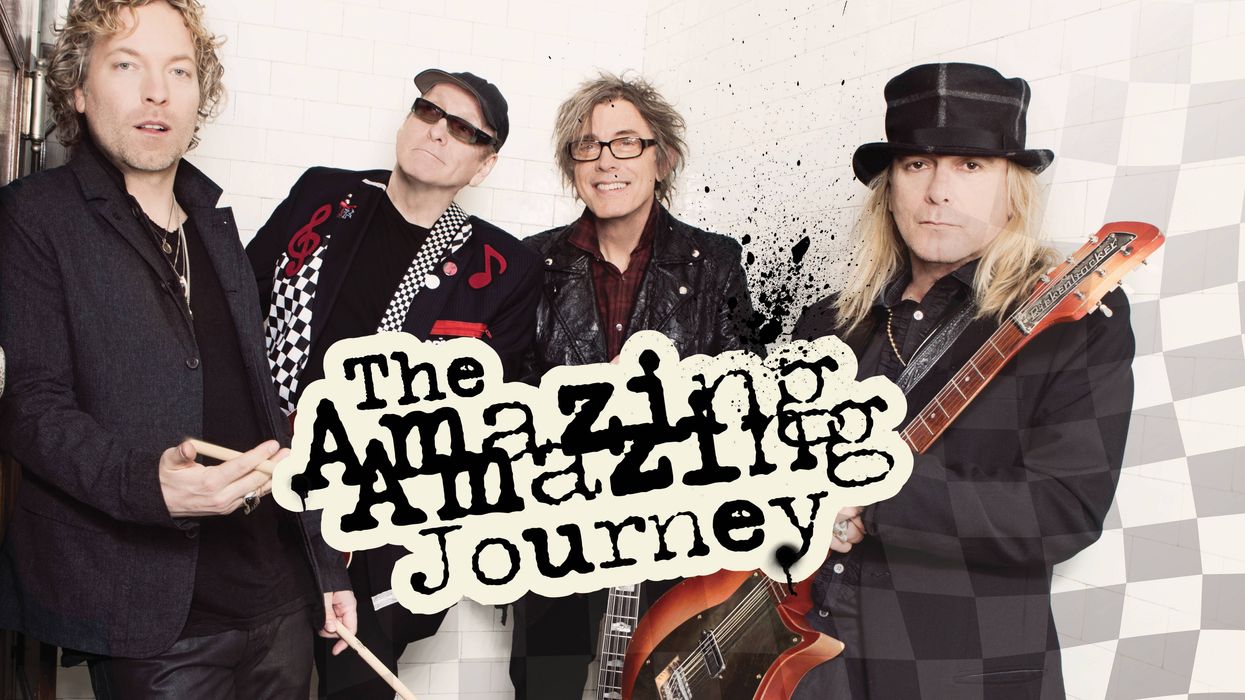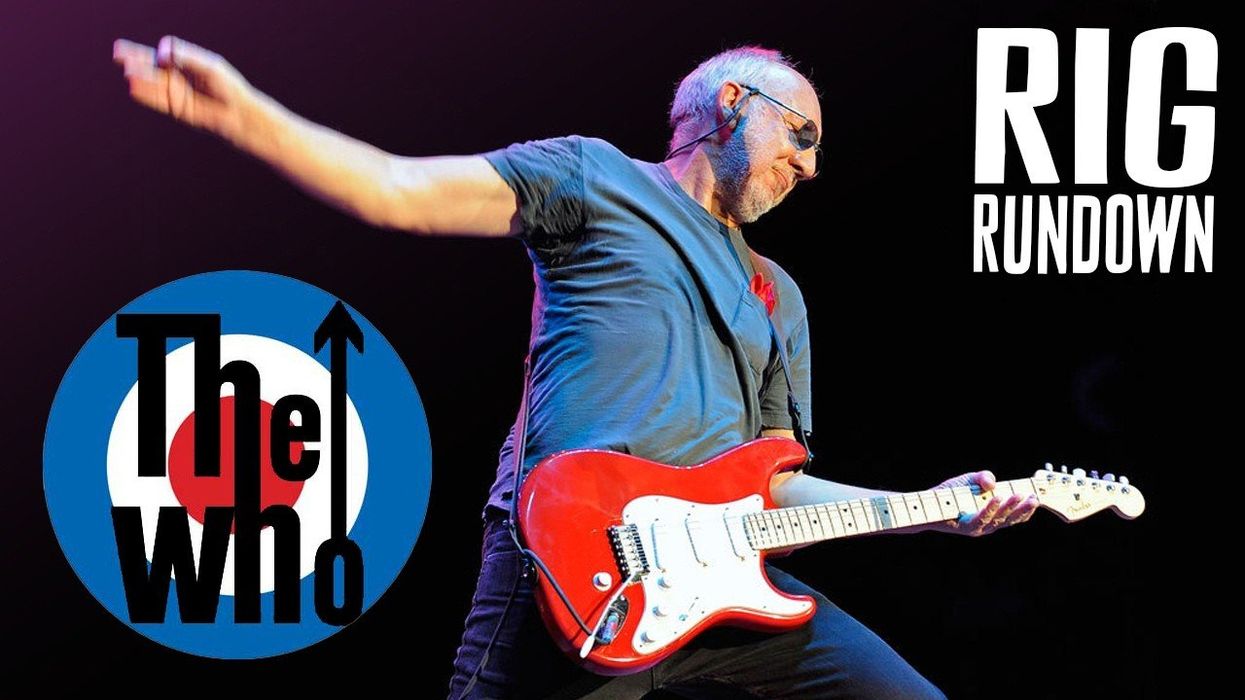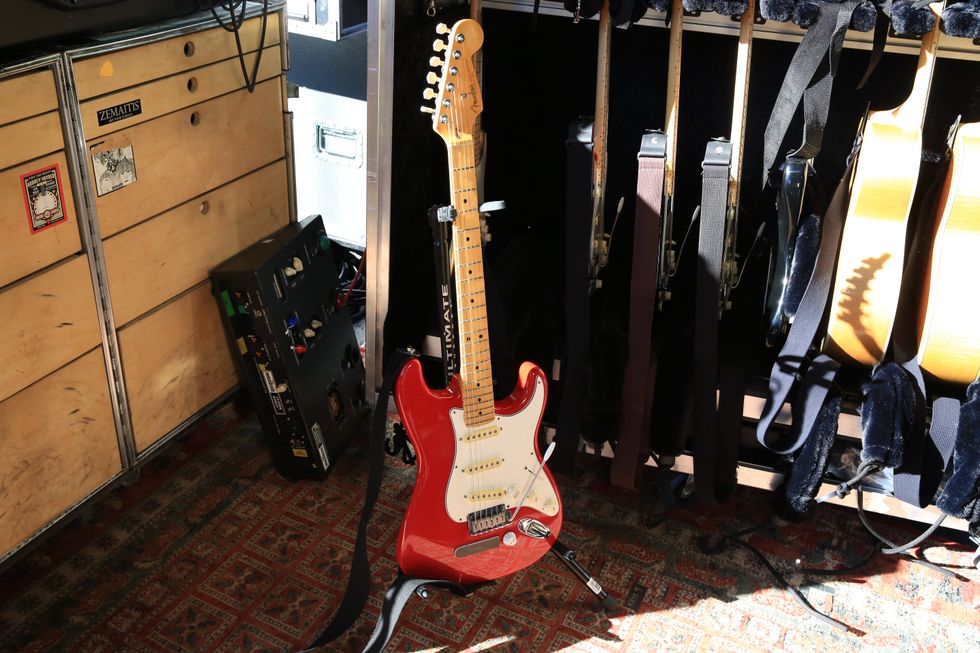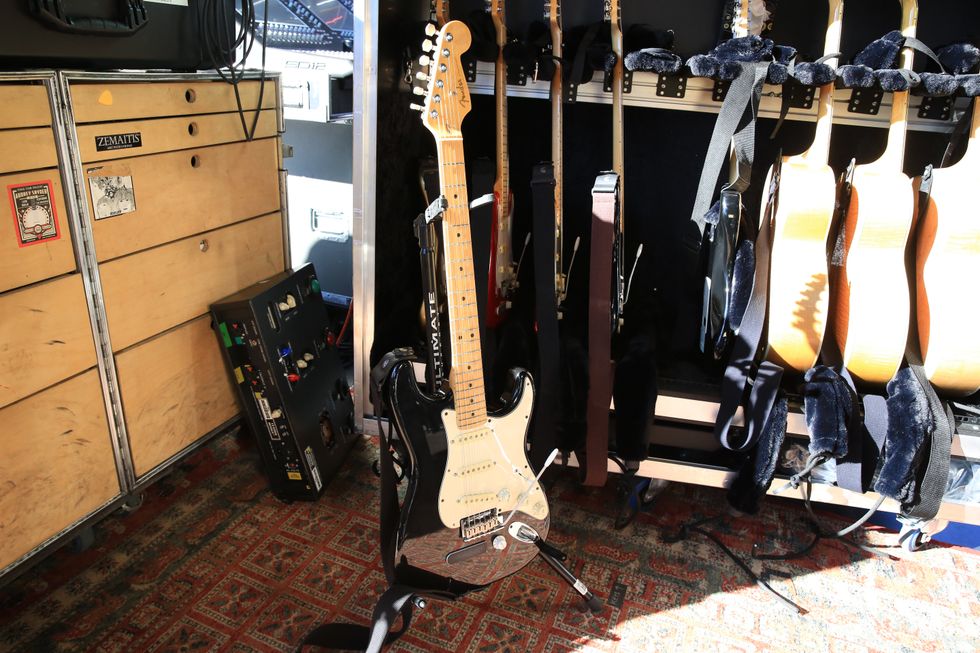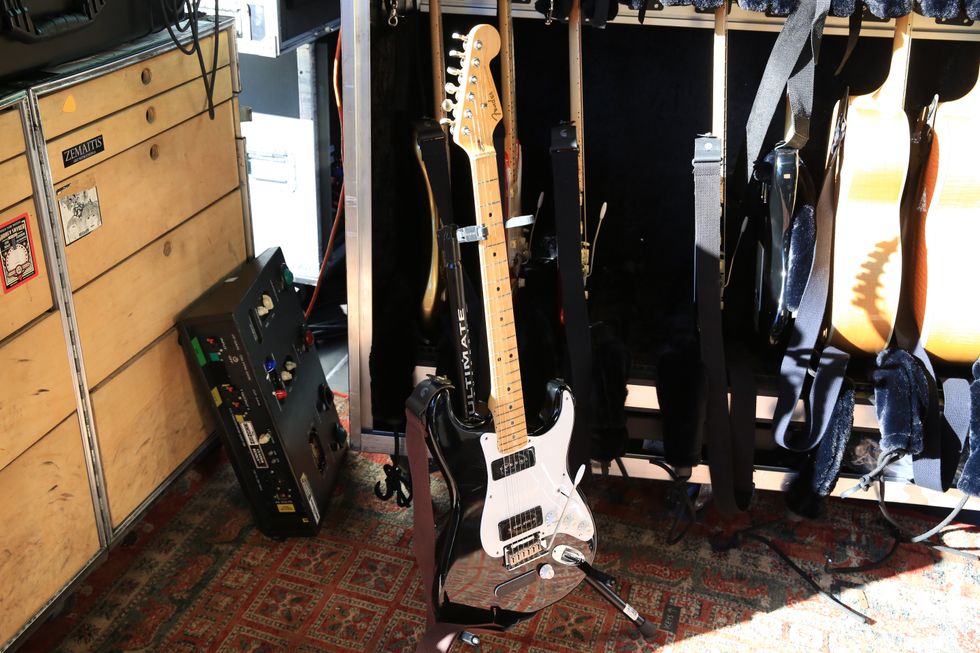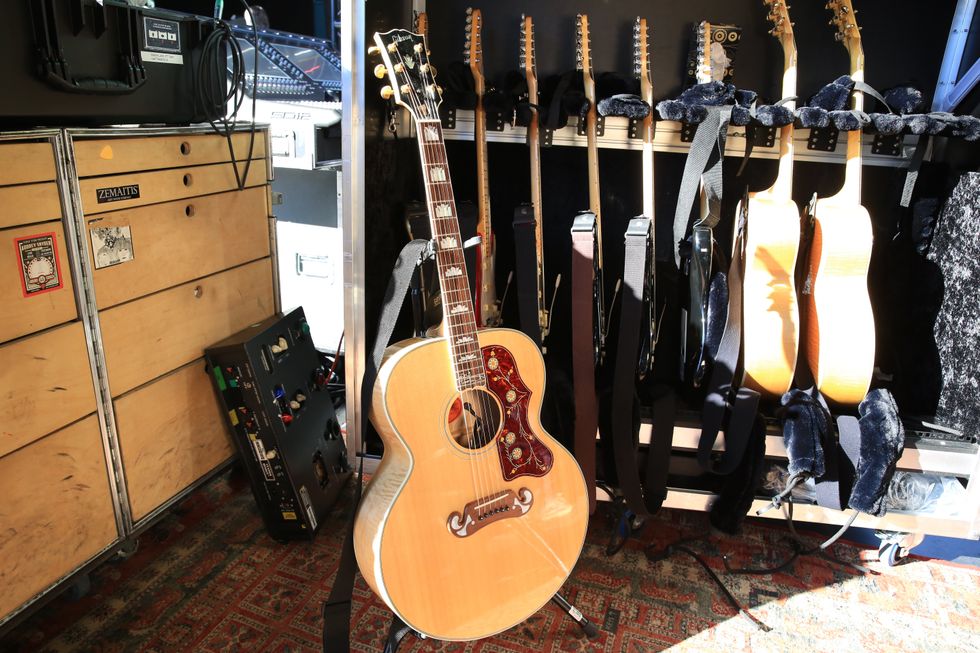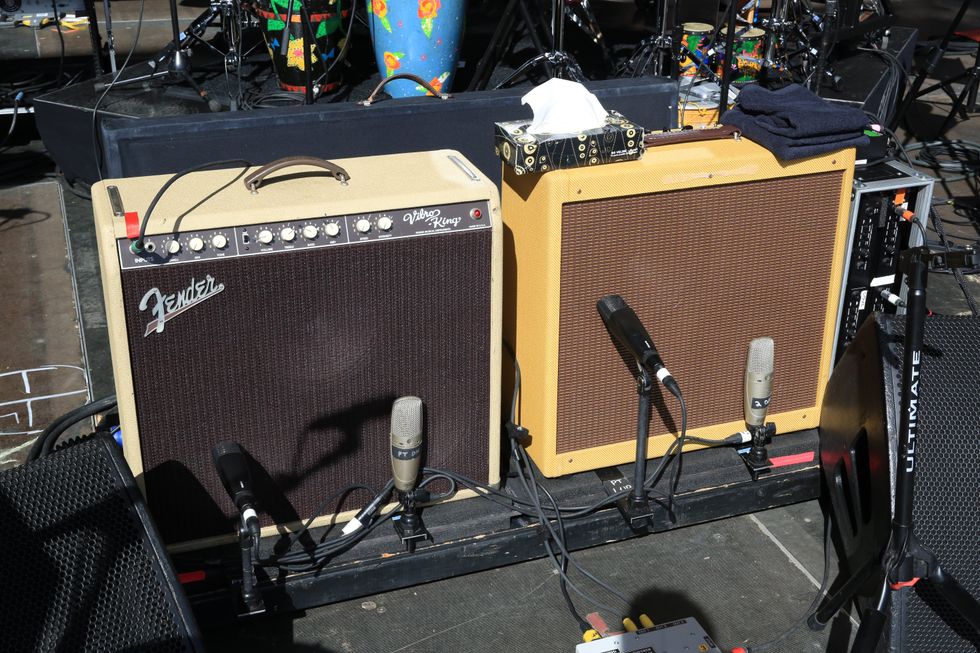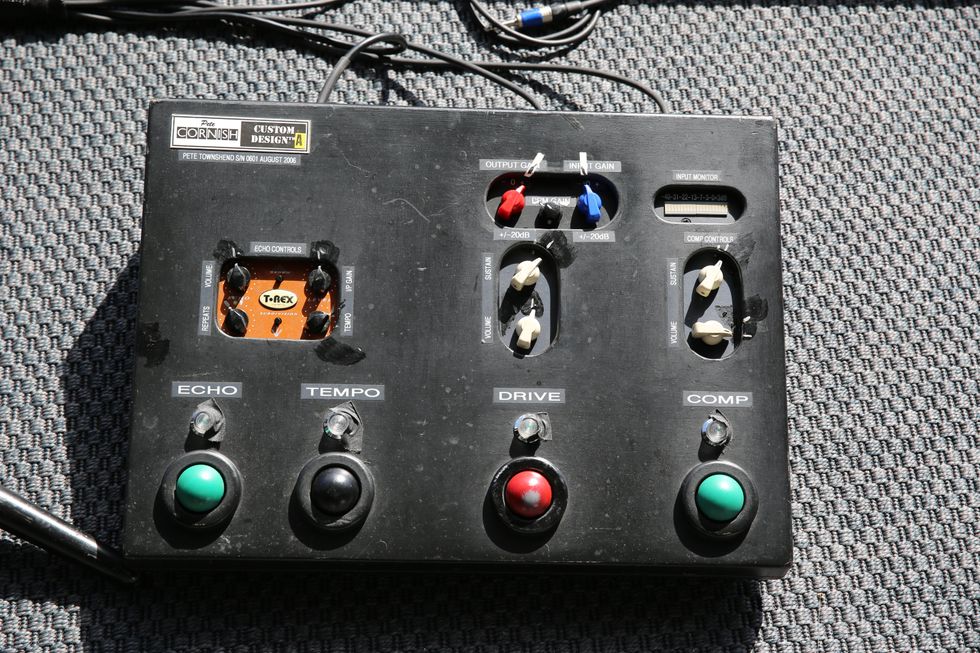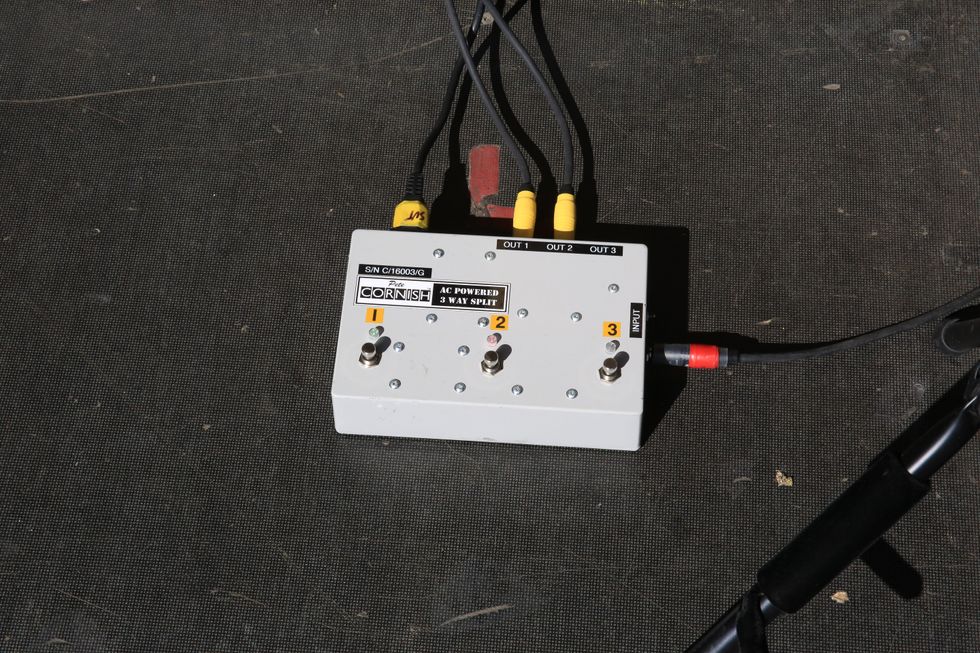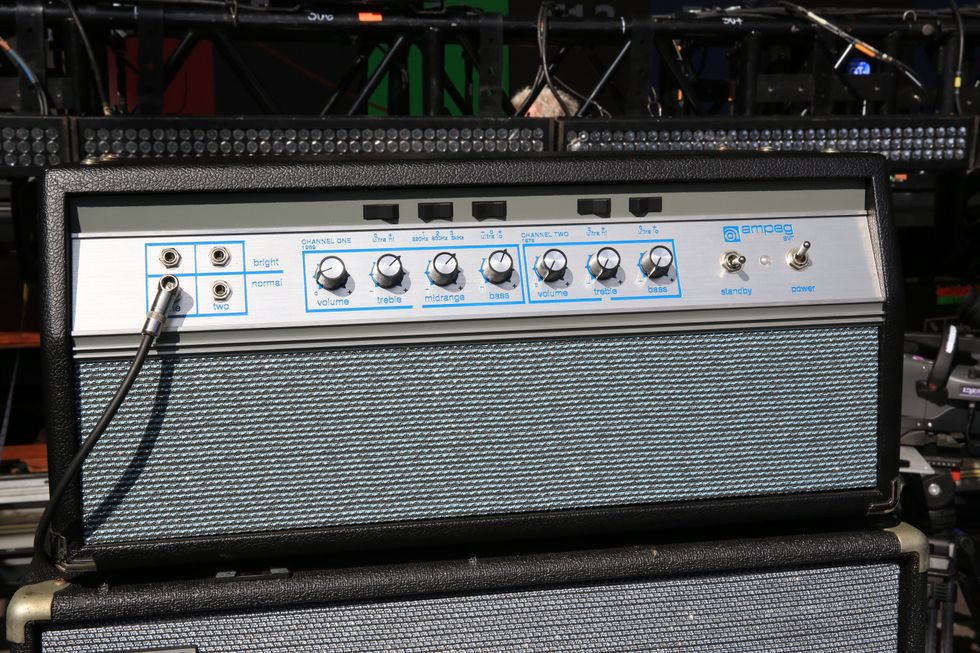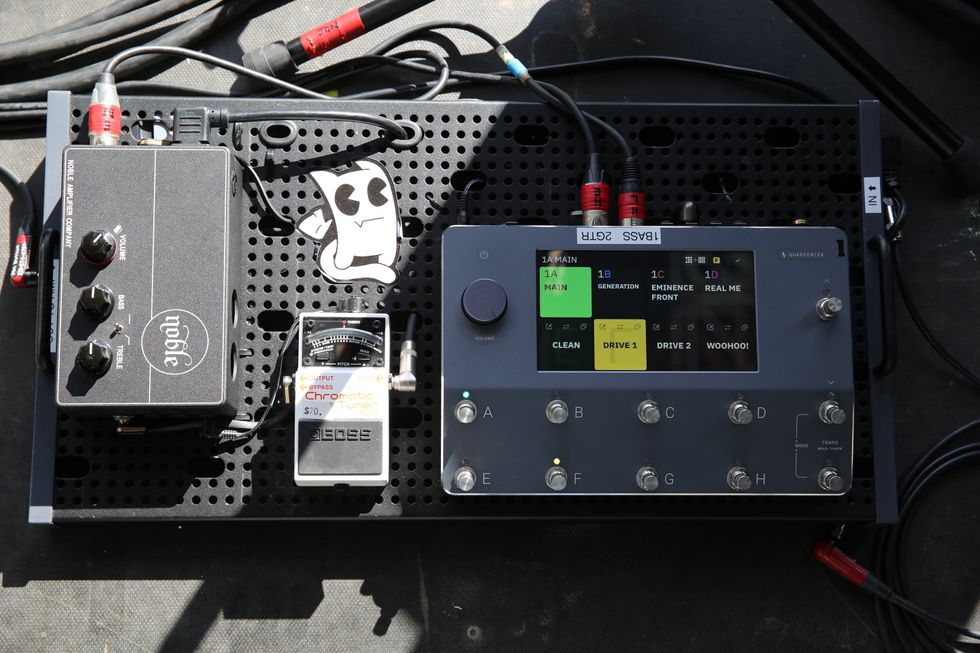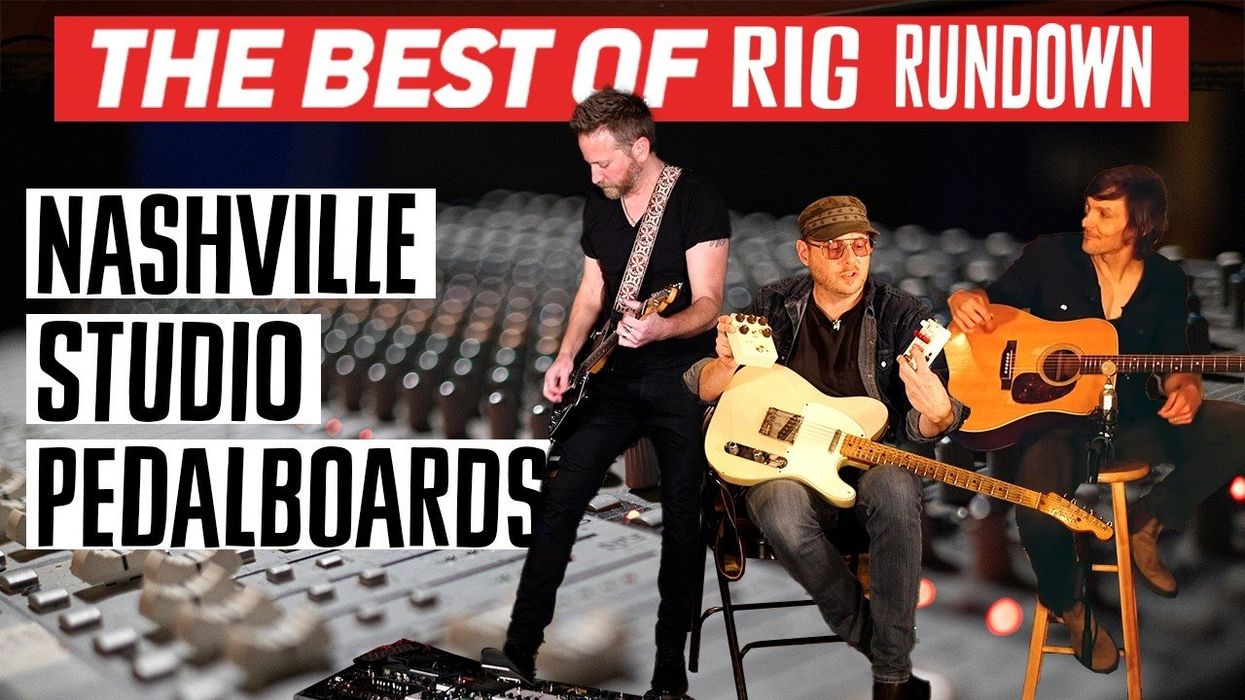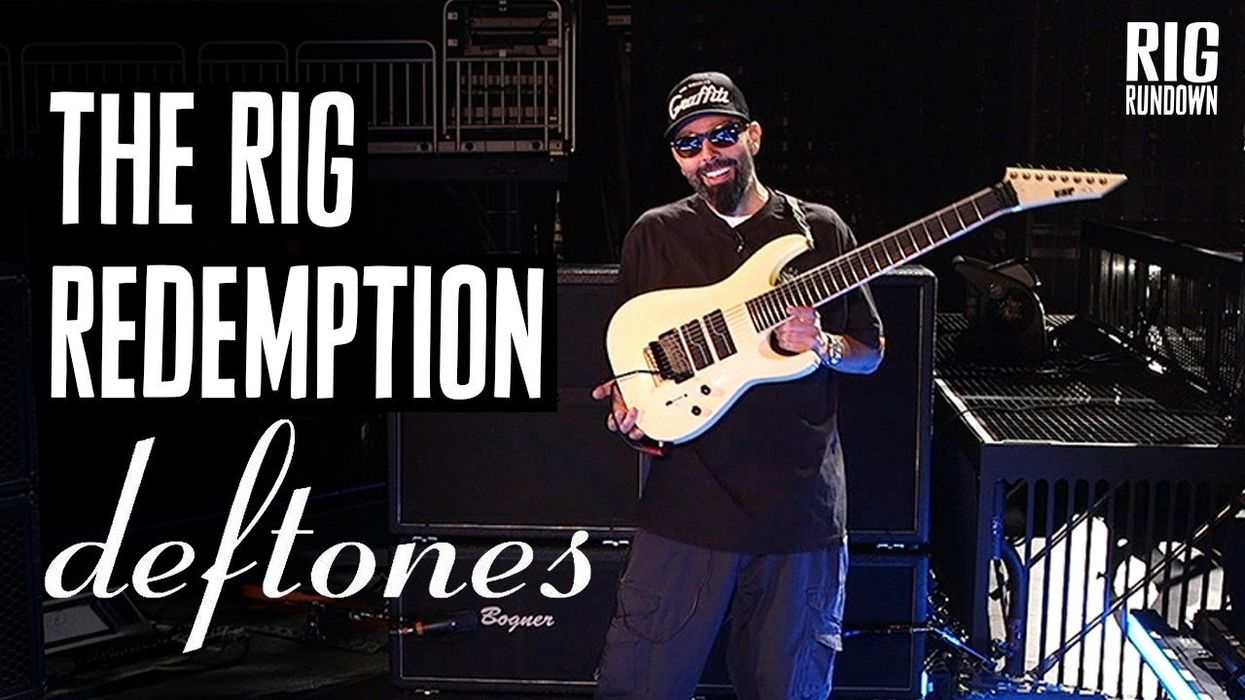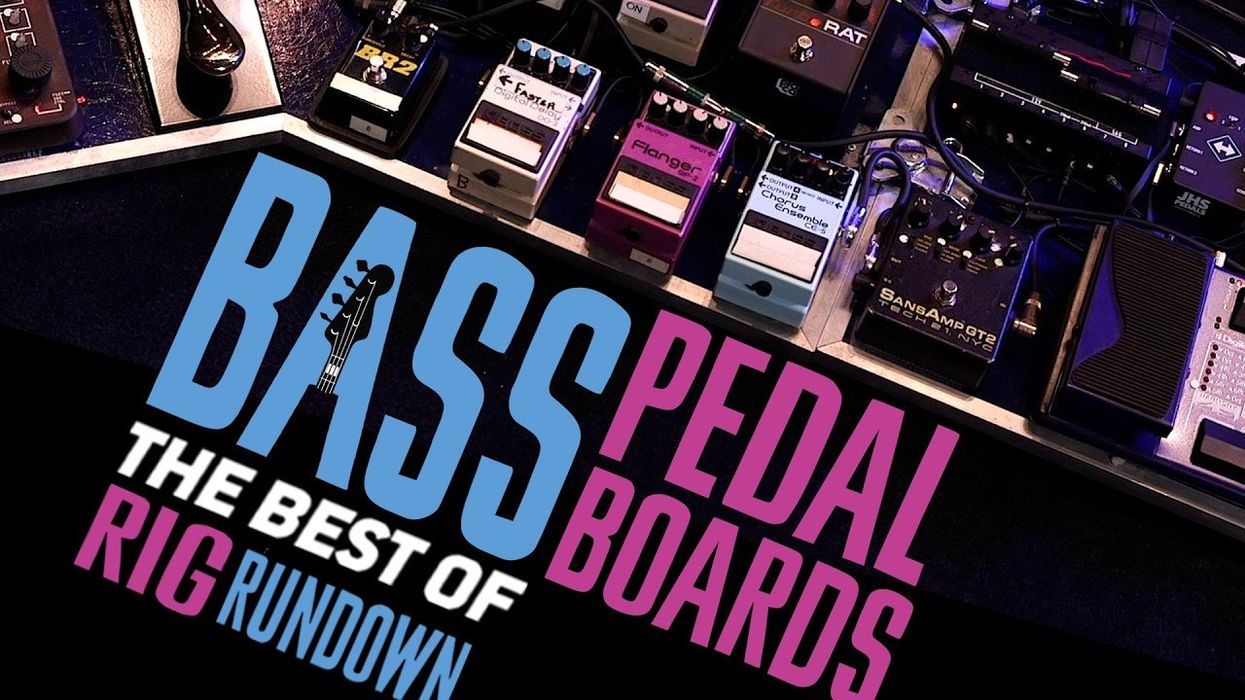The shredder and son of legendary artist Frank Zappa gives a tour of his up-to-date gear, including a complex stereo switching system, four racks of pedals, and some of his father’s favorite guitars.
Dweezil Zappa was always going to end up being an incredible guitarist. His dad, Frank Zappa, is celebrated as one of the most talented and creative guitarists in history, and by age 12, Dweezil was recording music produced by Eddie Van Halen. (Little surprise that he’s covering Van Halen’s 1981 stunner “Push Comes to Shove” lately.) He’s been a bona fide guitar star ever since, releasing seven original solo records, six tribute records, two LPs with his brother Ahmet Zappa, and guesting on recordings across the music universe.
Ahead of his gig at Memphis’ Minglewood Hall on his 2024 Rox(postroph)y tour, which celebrated the 50th anniversary of Frank Zappa’s Apostrophe (') and Roxy & Elsewhere records, Dweezil gave PG’s John Bohlinger a boot-to-bonnet look at his current road setup. There’s a lot of ground to cover between his and his father’s catalogues, and Dweezil loves the challenge, which he meets with a mix of his own gear and some special vintage assists courtesy of his dad.
Brought to you by D’Addario.Shut Up ’n Play Yer Les Paul
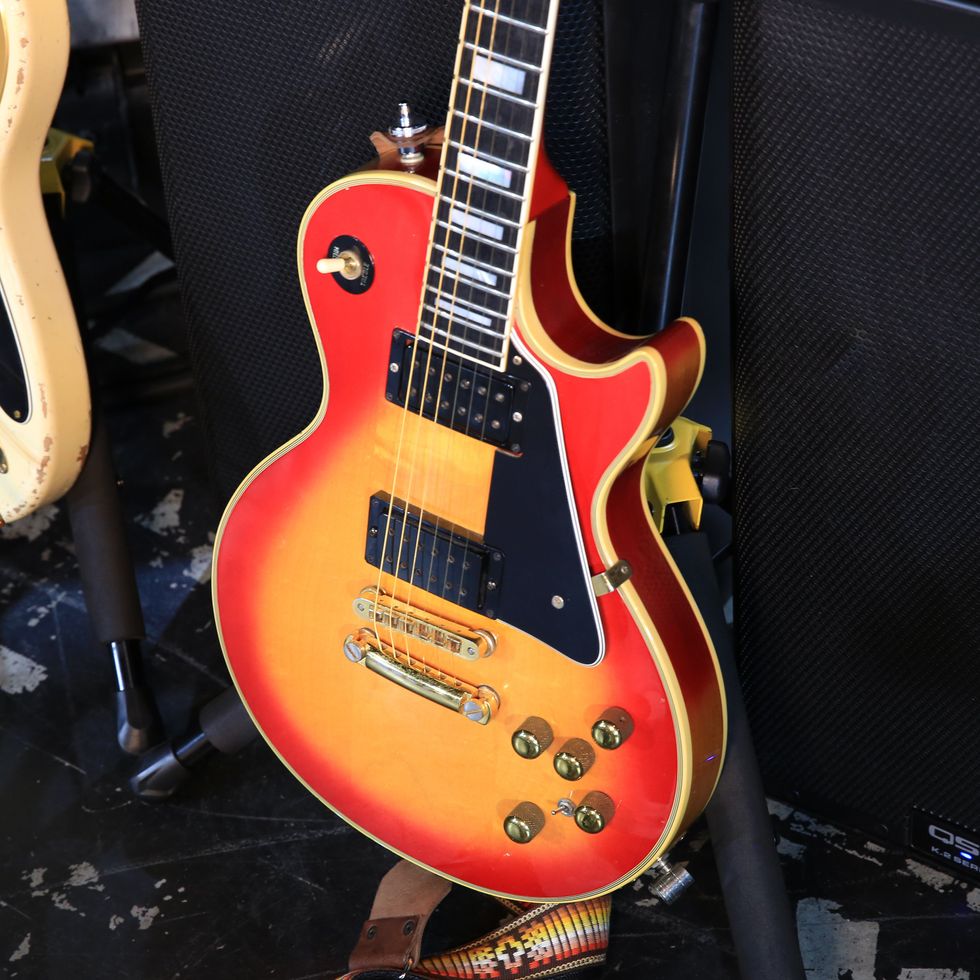
This coveted Gibson Les Paul Custom, featured on the cover of Frank’s 1981 record Shut Up ’n Play Yer Guitar, came out on the road this tour. Dweezil says that around 1986, his dad swapped in Dan Armstrong-made ceramic pickups. At one point, Frank installed a second input to try to use the guitar as a synth controller, but it didn’t track well enough to continue the experiment.
Along with the standard controls, the guitar includes switches to turn on different parts of the onboard preamp, which boosts the signal and adds plenty of gain. A rotary knob controls a wired-in parametric EQ set up to emulate different settings along the sweep of a wah pedal. Dweezil didn’t get much of the lowdown from his father on the complex operations; it was more trial-and-error. “You just have to turn knobs until you find something that you like,” he says. He connects to his rig with ZZYZX SnapJack magnetic cable connectors.
Rockin' with Roxy
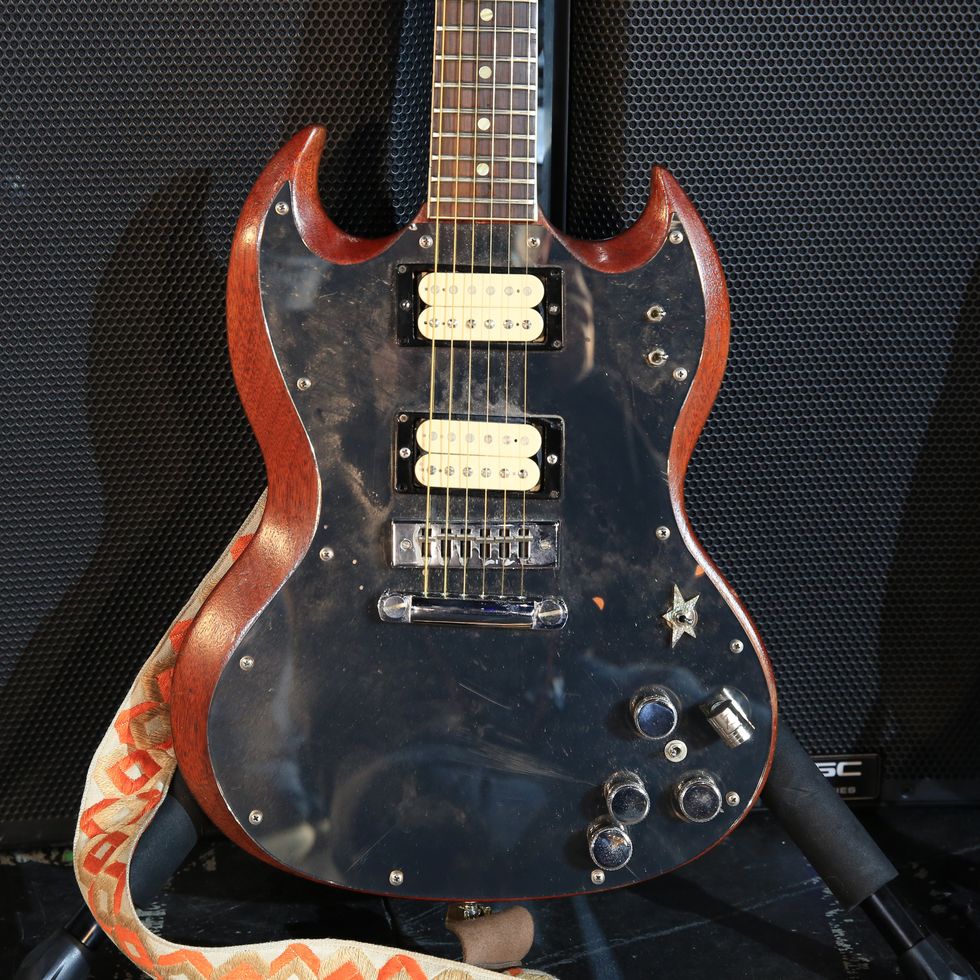
Also out on the Rox(postroph)y tour is Frank’s iconic Roxy & Elsewhere-era Gibson SG. Like the Les Paul, it’s got a preamp circuit to boost the signal, a sweepable EQ, and can achieve acoustic, piezo-adjacent sounds. The preamp configuration in this one is red-hot; it dishes out tons of gain.
Signature Shabat
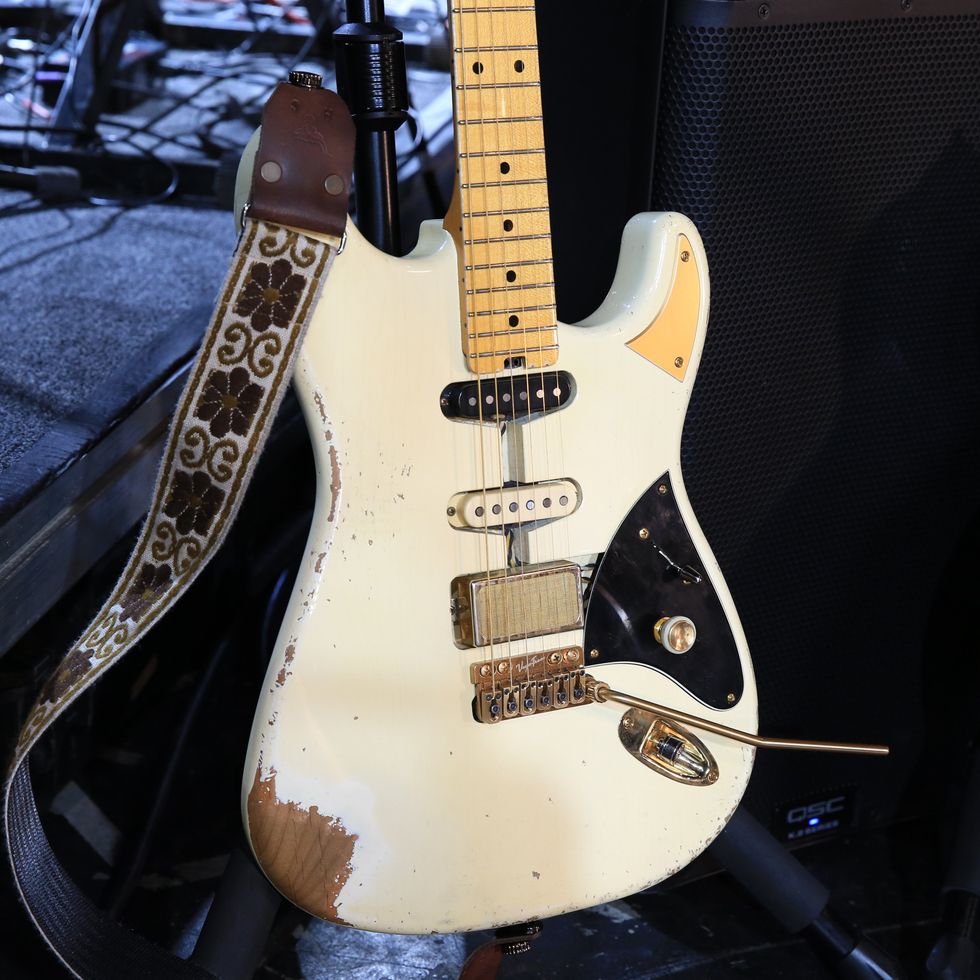
For Strat-style tones, Dweezil calls on his signature Shabat Lynx DZ, which has been used to dial in his cover of “Push Comes to Shove.” Per Shabat, it has a “body-mounted HSS configuration with a push/pull phase shift on the middle pickup, simplified single-knob layout, custom-cut 3-ply parchment/gold pickguard, and … a Vega-Trem VT1 tremolo."
The Lynx DZ is constructed with an alder body and a quartersawn hard maple, medium-C-profile neck with a 25.5" scale length. It’s loaded with Lollar Special S and Lollar El Rayo pickups, and the middle Special S is wired for phase shift. The Lynx, as well as the SG and Les Paul, are strung with Optima Gold-Plated 2028 FZ Frank Zappa strings (.008–.046), and struck with D’Addario .50 mm celluloid picks. (Dweezil likes them for pick slides.)
On the Ground
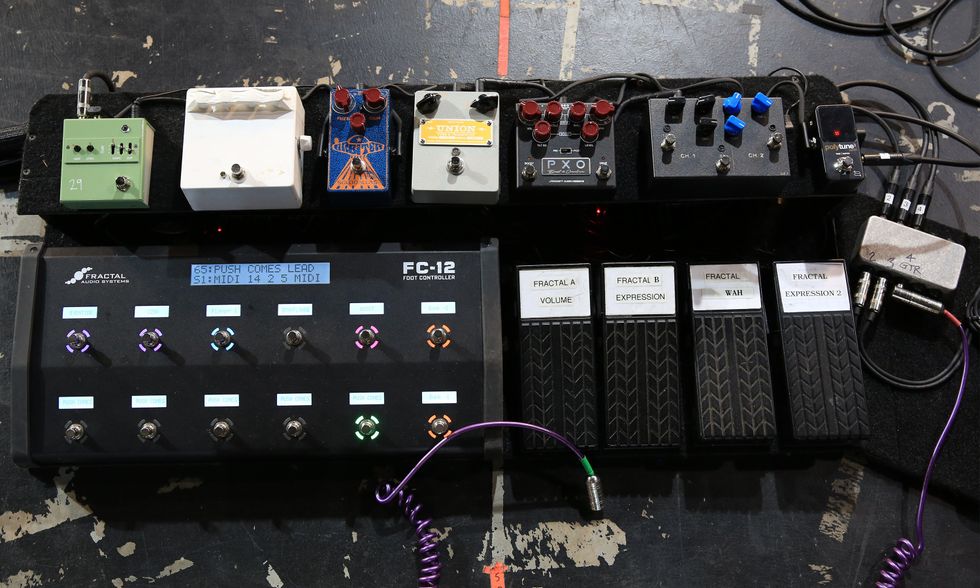
Zappa keeps a significant board at his feet, which he controls with a Fractal FC-12 controller. He runs his sound in stereo, with different effects going to each side, so he keeps volume pedals for each side in front of him, plus a wah and expression pedal.
The row of pedals perched atop the pedalboard includes a TC Electronic Polytune 3 Noir, a Marshall-style prototype pedal, J. Rockett Audio Designs PXO, Union Tube and Transistor Lab, SoloDallas Orbiter, a Jext Telez White Pedal (to nab a specific tone for playing “Nanook Rubs It”), and a 29 Pedals FLWR.
In the Rack
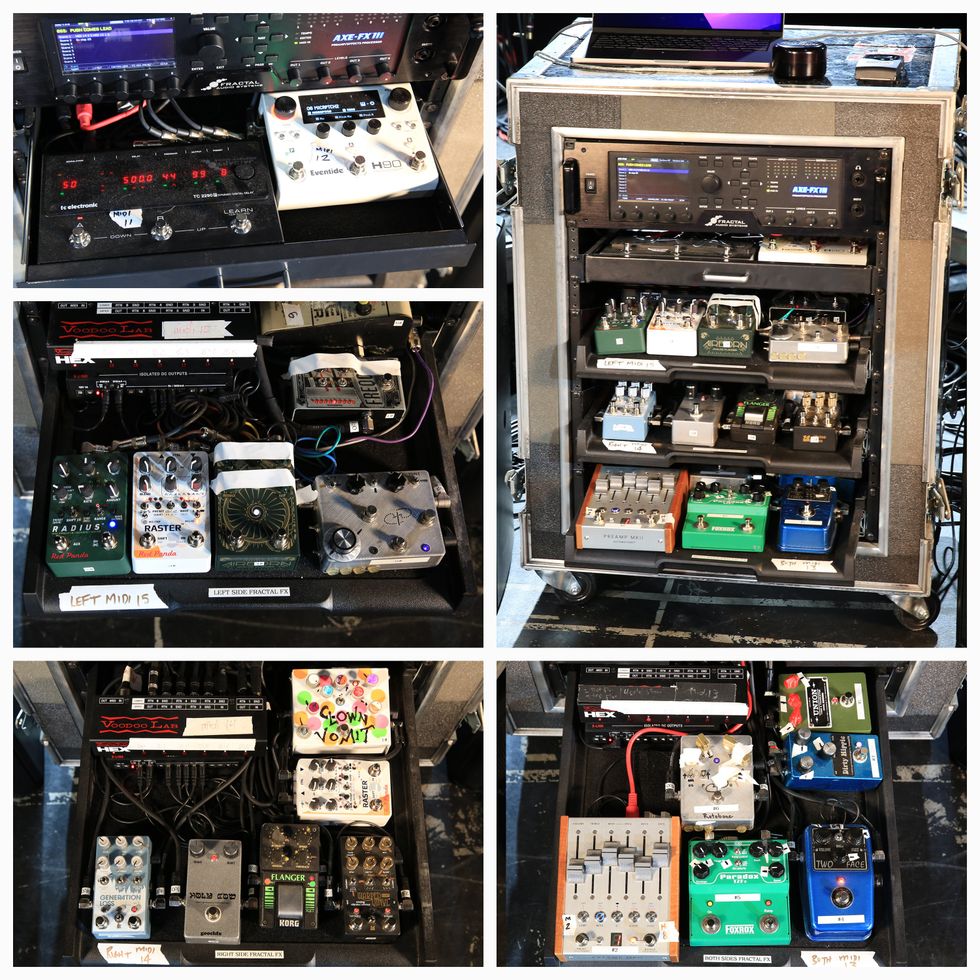
On our 2013 Rig Rundown, Dweezil was using the Fractal Axe-Fx II, and this time around, he’s upgraded to the Axe-Fx III as the basis of his sound. Given the sonic territory covered in his shows, it simply became too unwieldy and expensive to tour an analog rig.
The brains of his show are held in a rack system. A couple of out-of-sight splitter boxes help with the complex stereo signal paths, as do a pair of Voodoo Lab HEX audio switchers. The Axe-Fx III lives on the top shelf, and just below it are an Eventide H90 and TC Electronic TC 2290 that go to both sides.
The next rack down runs only to the left side, and includes a BK Butler Tube Driver, DigiTech FreqOut, Red Panda Radius and Raster, Krozz Devices Airborn Analog Flanger, and a Paul Trombetta Design Tornita! fuzz.
The level below it runs to the right side, with a “Clown Vomit” fuzz, Chase Bliss Warped Vinyl, Korg FLG-1 Flanger, Chase Bliss Generation Loss, Goochfx Holy Cow, and another Red Panda Raster.
Wrapping up the rig is the bottom rack, which again runs to both sides. It carries most of Zappa’s exquisite dirt sounds, thanks to a Union Tube and Transistor Tsar Bomba, Chase Bliss Automatone Preamp MKII, Goochfx Dirty Hippie, Tru-Fi Two Face, Foxrox Electronics Paradox TZF2, and a Paul Trombetta Design Rotobone that … somewhat reasonably apes a trombone sound. Paul Trombetta, we salute you.
![Dweezil Zappa Rig Rundown [2025]](https://www.premierguitar.com/media-library/youtube.jpg?id=56183232&width=1200&height=675)


![Rig Rundown: AFI [2025]](https://www.premierguitar.com/media-library/youtube.jpg?id=62064741&width=1245&height=700&quality=70&coordinates=0%2C0%2C0%2C0)

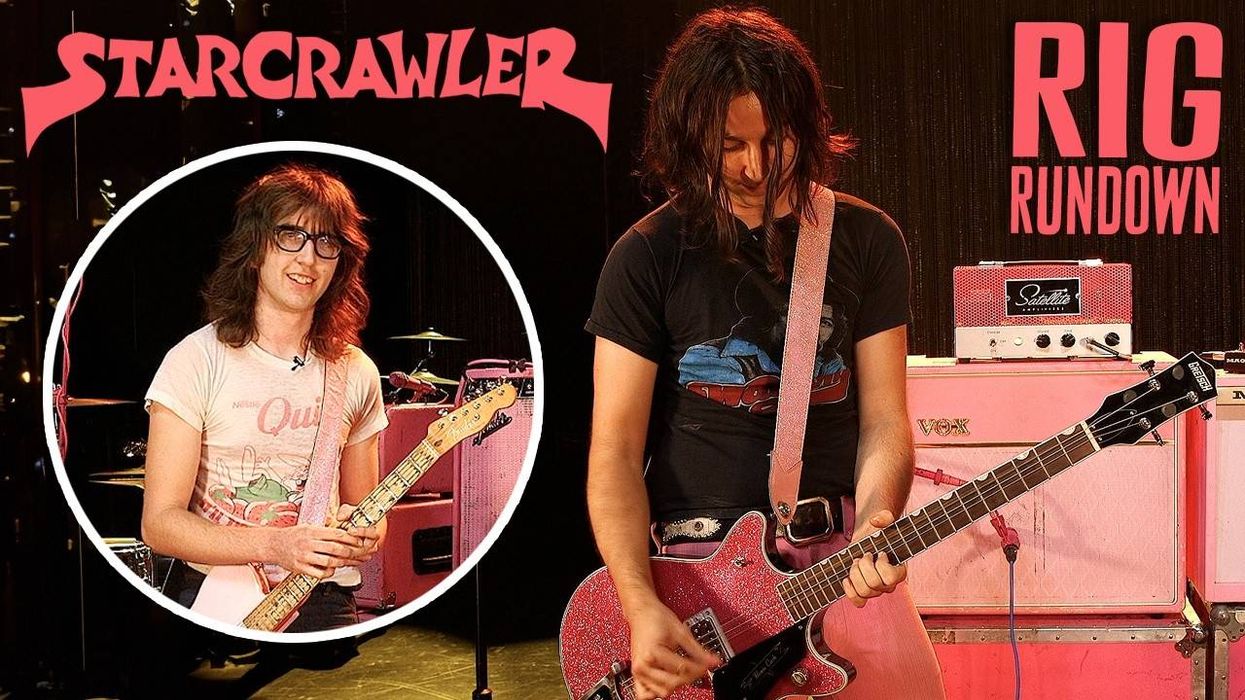
![Devon Eisenbarger [Katy Perry] Rig Rundown](https://www.premierguitar.com/media-library/youtube.jpg?id=61774583&width=1245&height=700&quality=70&coordinates=0%2C0%2C0%2C0)




























